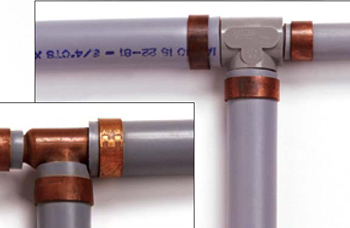All About Polybutylene Plumbing
Polybutylene (PB) was a plastic manufactured between 1978 and mid-1995 for use as piping in home plumbing systems. It was inexpensive and offered plenty of advantages over other materials, such as flexibility, ease of installation, resistance to freezing. Pipes made from polybutylene were installed in up to 10 million homes in the Unites States during that period. Despite its strengths, production was ceased in mid-1996 after scores of allegations surfaced claiming that polybutylene pipes were rupturing and causing property damage. In the homes that still contain this material, homeowners must either pay to have the pipes replaced or risk a potentially expensive plumbing failure.

- usually stamped with the code “PB2110”;

- flexible and sometimes curved, unlike rigid piping materials such as copper;
- not used for waste, drain or vent piping;
- most commonly grey in color, but they can also be white, silver, black or blue. Blue PB is used primarily outdoors and should only be used to carry cold water. Inspectors should be aware that black or white pipes might not be polybutylene (they might be polyethylene or PVC, respectively). Also, PB color is somewhat region-dependant. For instance, experienced homeowners in California might never come across grey PB, while it is quite common elsewhere;
- ½” to 1” in diameter.
Polybutylene pipes can be in a home’s interior or exterior in any of the following locations:
- protruding from walls to feed sinks and toilets;
- running across the ceiling in unfinished basements;
- near the water heater.
Exterior:
- entering the home through the basement wall;
- at the water meter;
- at the main water shut-off valve.
Remember, hire a licensed plumbing contractor to make a complete assessment of your homes plumbing system if you believe polybutylene is present.
[/av_textblock]










Leave a Reply
Want to join the discussion?Feel free to contribute!